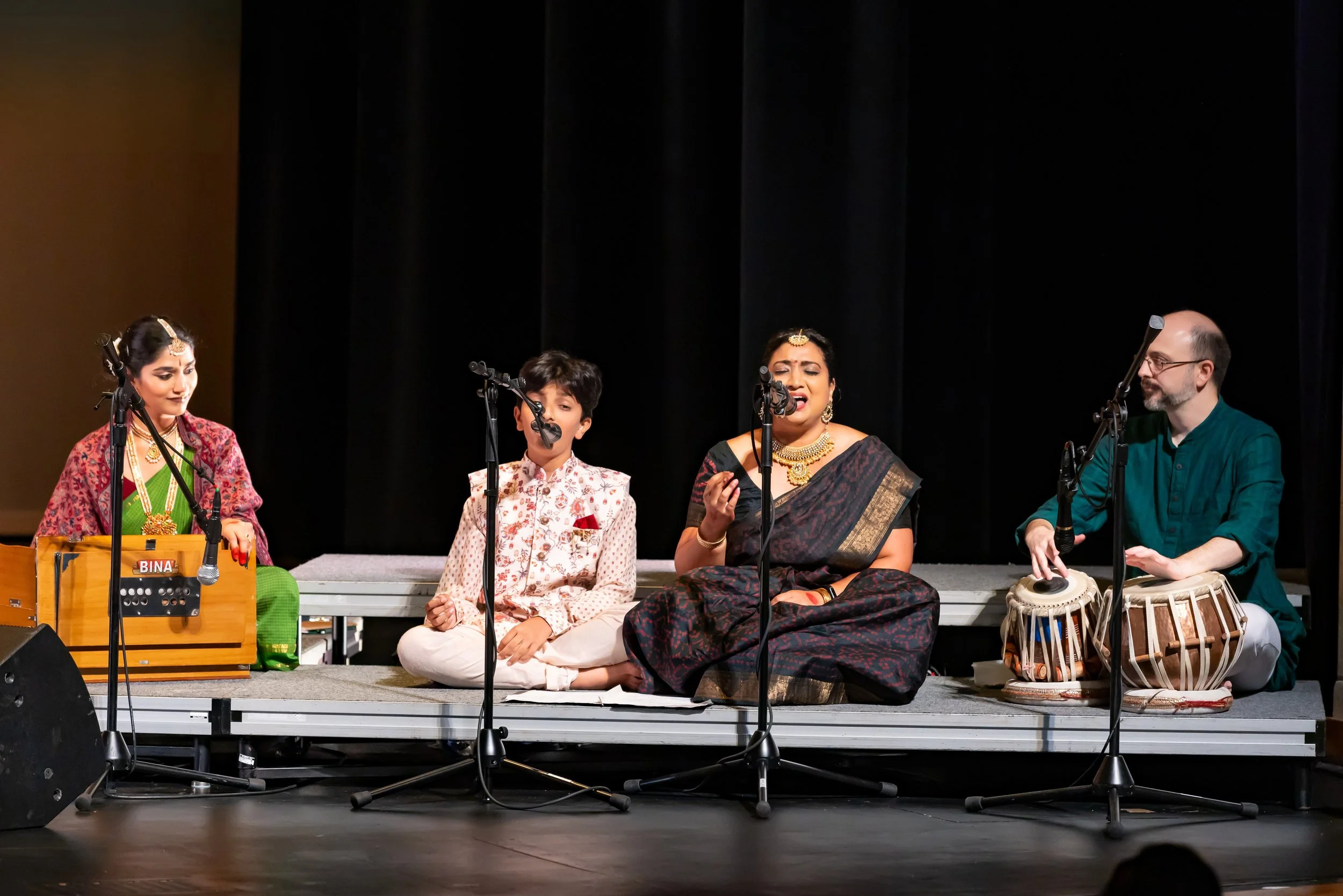
ABout the art formS
Hindustani music is a system of music commonly associated with northern and northwestern India. Also known as Shastriya Sangeet, it is one of two main subgenres of Indian classical music that evolved from ancient Hindu traditions, the other subgenre being Carnatic music, from Southern India. Hindustani music emerged as a distinct form due to its Persian and Islamic influences. This combination of Indian musical tradition with Persian-Arab influences resulted in the unique gharana tradition of musical education.
The central notion in the Hindustani system, as in Carnatic music, is that of a melodic musical mode or raga, sung to a rhythmic cycle or tala. It is melodic music, with no concept of harmony. Although there are stylistic differences, the basic elements of sruti (the relative musical pitch), swara (the musical sound of a single note), raga (the mode or melodic formulæ), and tala (the rhythmic cycles) form the foundation of improvisation and composition in both Carnatic and Hindustani music. Although improvisation plays an important role, The major vocal forms or styles associated with Hindustani classical music are dhrupad, khyal, and tarana. Light classical forms include dhamar, trivat, chaiti, kajari, tappa, tap-khyal, ashtapadis, thumri, dadra, ghazal and bhajan; these do not adhere to the rigorous rules of classical music.
The Tabla is a pair of drums played by hand as percussive accompaniment in the Hindustani music system. It features prominently in Hindu and Sikh devotional music traditions, as well as in the qawwali music of Sufi tradition. It is an important instrumental accompaniment in Kathak dance tradition as well. Deriving from the Arabic term 'tabl’, meaning drum, the tabla consists of two drums of slightly different shapes and sizes, played with intricate and complex movements of the fingers and palms to create different tones and patterns.
The Sitar is a plucked string instrument used in Hindustani classical music, originating from the Indian subcontinent. It features a deep, pear-shaped gourd body and a long, hollow neck with movable frets. The sitar is known for its resonant and complex sound, produced by its main playing strings, along with a set of sympathetic strings underneath. These sympathetic strings vibrate in response to the main strings, creating a rich, layered acoustic texture.
Faculty
Vocal: Mounika Karnam
Tabla: Jason Zinn
Sitar: Rajarshi Bandypopadhyay
Our Hindustani vocal curriculum covers Music History, Raga Theory, Vocal Technique, Voice Conditioning, and
Ancillary Subjects (Rhythm, Notation, Accompaniment). At each level, students strengthen their
technical skills, creativity, and cultural understanding by studying ragas (Aaroh, Avroh, Swar
Malika), Taans, and Aalaps, and by learning to recognize ragas through their Swara clusters.
Beginner 1 (No prerequisite)
Introduces basic breathing, vocal control, simple Alankaars, foundational rhythmic patterns, and
raga basics (Aaroh, Avroh, Swar Malika).
Beginner 2 (Prerequisite: Beginner 1)
Builds vocal agility, deepens raga comparisons, and introduces advanced Alankars, fast Taans,
and extended Aalaps for stronger improvisation.
Intermediate 1 (Prerequisite: Beginner 2)
Focuses on core theoretical terms (Sangit, Naad, Shruti, Saptak, Alankar, etc.) and their practical
applications, establishing a solid foundation in Hindustani music theory.
Intermediate 2 (Prerequisite: Intermediate 1)
Students achieve proficiency of the prescribed ragas by performing both Vilambit and Drut
Khyal renditions with detailed Alaaps and varied Taans.
Advanced 1 (Prerequisite: Intermediate 2)
Students refine their vocal artistry by integrating advanced improvisational techniques, nuanced
voice modulation, and intricate ornamentation while deepening their theoretical and historical
understanding of Ragas.
Advanced 2 (Prerequisite: Advanced 1)
Students master an extensive repertoire by delivering both Vilambit and Drut Khyal renditions
with sophisticated Alaap and dynamic Taans, culminating in performances that showcase their
personal interpretation and readiness
